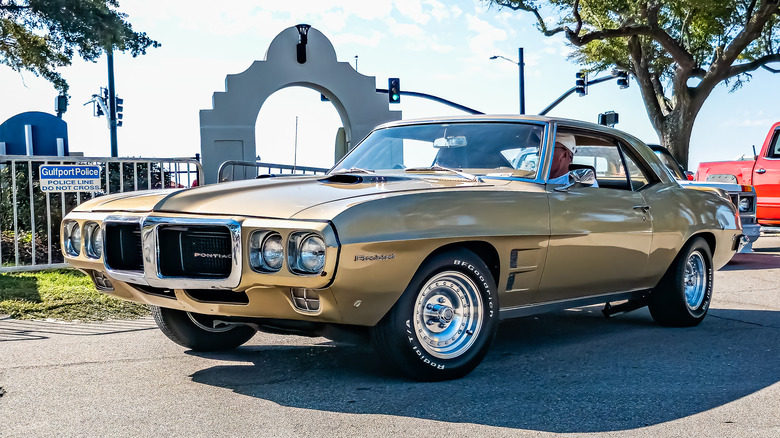
Different_brian/Getty Images
Pontiac was quite the automaker in its heyday. The GM-owned subsidiary was right in the thick of the American muscle car era, releasing some of the its coolest looking cars in that period. From the GTO to the Firebird and the Trans Am, there was always a competitive Pontiac duking it out with the other muscle cars. But even before then, Pontiac had winners like the Star Chief and LeMans, and afterward it had a sleeper hit on its hands with the Pontiac Fiero. Pontiac sold 370,000 of those in only five model years, making for a surprisingly popular car.
Advertisement
Pontiac kept it up for a few more decades until things started to turn sour. The company hadn’t done the best at keeping up with trends, and then the auto industry suffered a financial crisis that required a government bailout. Congress agreed to help GM, on the condition that it restructure its business and cut costs. Among the costs cut was the entire Pontiac brand, along with the entire Saturn brand.
Sad though the brand’s end may be, it makes older Pontiac models even more collectible. If you’re considering picking one up as a project car or to cruise around on nice days, you might expect the price of Pontiacs to have skyrocketed, but many are actually still reasonably priced. Here are some of the more affordable classic Pontiac cars we found.
Advertisement
How We Chose These Cars
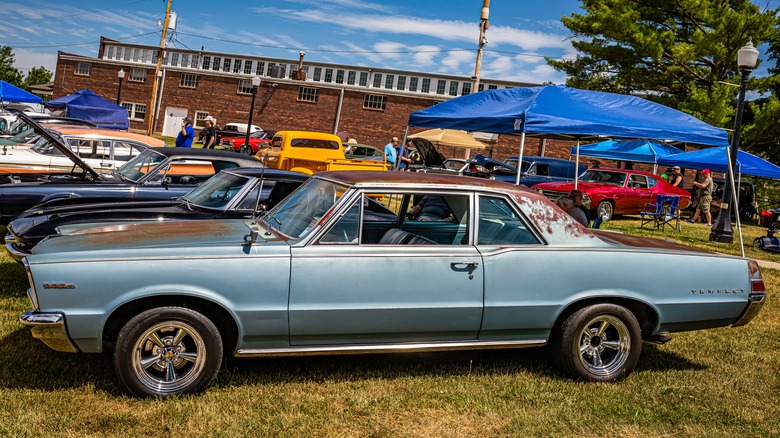
Gestalt Imagery/Shutterstock
The biggest question we asked ourselves when we went into this is what constituted as affordable. The word is highly subjective. You have to take into consideration things like how much people get paid and how much similar items cost. Classic cars have a massive gap between inexpensive and very expensive. Take the 1965 Pontiac GTO, for example, which can sell for anywhere from around $17,500 to $150,000 (or even higher in some cases).
Advertisement
That makes affordability difficult to gauge, so we went with the completely arbitrary number of $50,000 as our price ceiling. These cars often appreciate in value over time and rarely lose their value as long as you keep them in good condition. Thus, while $50,000 for a classic collectible vehicle may be a bit high, at least you’re not losing 20% of its value as soon as you drive it off the lot like with a brand-new car. Don’t worry, there are cars on this list that cost well under $50,000 as well.
The only other determination is what constitutes as a classic car. Definitions change depending on who you ask since there is no agreed-upon minimum age for classics. For the most part, we stuck with the ’50s, ’60s, and ’70s, since that’s where many people’s minds go when you refer to classic cars (especially Pontiacs). However, we do have some models around 20 years old, which some people might consider classic, too.
Advertisement
Early 2000s Pontiac Firebird
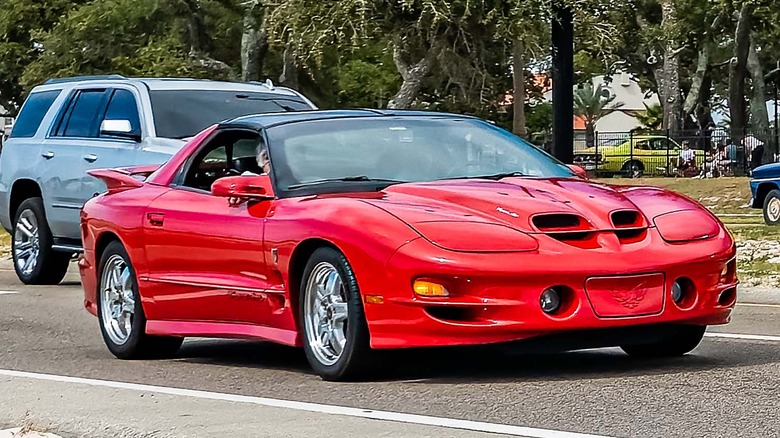
Different_brian/Getty Images
Pontiac killed off the Firebird lineup after just four generations, and the final generation was arguably one of the best. Made from 1993 to 2002, the Firebird was a pretty good late model muscle car. The base model came with a V6 that put out 200 hp, while the optional LS1 V8 engine — which GM also put in Chevy Camaros in those days — increased it to 310 hp. The WS6 performance package added a ram-air induction hood and an extra 15 ponies as well, putting the top limit at 325 hp.
Advertisement
With its top-end engine, the car could do 0 to 60 mph in 5 second flat and could go much faster with modifications. What makes this car unique on the list is that it’s a newer version, so most of the ones you find on the used market are in drivable condition for not that much money. These models also had a convertible variant, giving you the option for a summertime cruiser. It’s an all-around decent car and the last Firebird Pontiac ever made.
The used market varies quite a bit but you can find a 2000s Pontiac Firebird for under $20,000 with less than 50,000 miles on the odometer if you look hard enough.
1960s Pontiac GTO
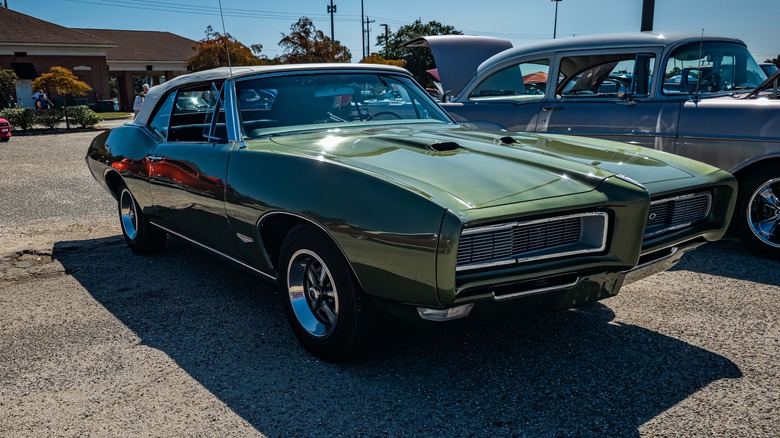
Gestalt Imagery/Shutterstock
The Pontiac GTO is one of Pontiac’s most legendary nameplates and it played a pretty big role in the 1960s muscle car movement. GTO stands for Gran Turismo Omologato, a name that Pontiac borrowed from Ferrari and will definitely come up in a trivia night tournament someday. These cars came in a variety of configurations in the 1960s. Engine options included the base 330 cubic inch V8 or the 389 cubic inch V8. Most of the GTOs sold these days come with the 389. Models from 1968 through the 1970 model year also had a 400 cubic inch V8.
Advertisement
These cars were pretty quick and definitely put the «muscle» in muscle car. GTOs from 1964 through 1968 with the optional 389 V8 could do 0 to 60 mph in 6.1 seconds and the quarter mile in 14.5 seconds. Late ’60s models could took just a hair over 5 seconds to go from 0 to 60 mph and 13.8 seconds for a quarter mile. Like the fourth generation Firebird, you can also get these in a convertible if you want that extra bit of style.
As mentioned earlier, prices for the Pontiac GTO tend to range quite a bit. You can find plenty of 1960s GTOs in good condition for under $50,000, although prices can range up over $100,000 in some cases.
1960s Pontiac Tempest
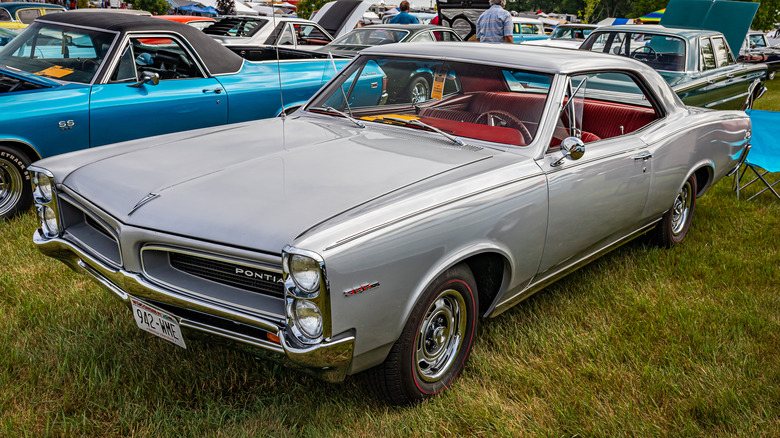
Different_brian/Getty Images
Pontiac introduced the Tempest in 1961 and built it through 1970. During that span, the Tempest had three generations. Initially designed to compete with the Ford Falcon, this was a pretty nice little cruiser, but the generation you choose will largely dictate your experience. Pontiac made the first-generation car smaller and introduced it as an economy car. The automaker upsized it for the second generation, before putting it out to pasture in 1970. Pontiac revived the Tempest in 1987 for a few short years, but buried it again in 1991.
Advertisement
All variants of the first-generation Pontiac Tempest were powered by the «Trophy 4» engine, based on Pontiac’s bigger, more powerful Trophy 8. It was rated for a maximum of 140 hp and 207 lb-ft of torque. When Pontiac added some extra size to the proceedings in the second generation, the Tempest came with an inline-six as a base, with options that ranged all the way up to the same Pontiac 389 V8 that powered the Pontiac GTO. Thus, if you want the muscle car variant of the Tempest, you’ll want to check out the second generation.
Much like the GTO, prices tend to range quite a bit. However, there are many late ’60s Tempests on sale for well under $50,000.
1960s and ’70s Pontiac Bonneville
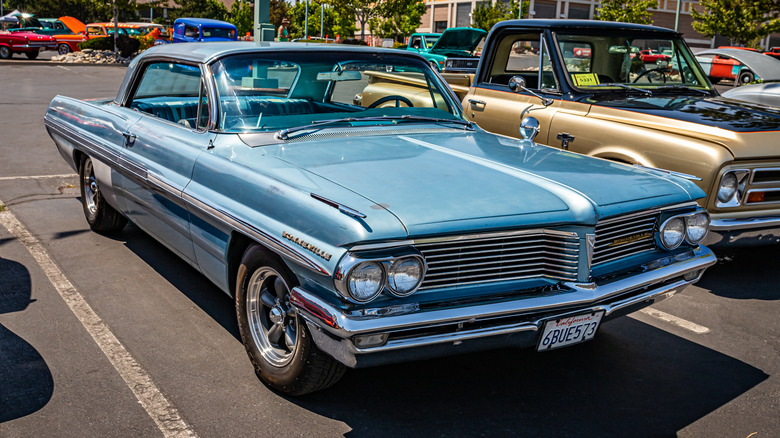
Different_brian/Getty Images
The Pontiac Bonneville ended up being one of Pontiac’s longest running nameplates. Pontiac started making the Bonneville in 1957 and continued all the way until 2005. In all, there were 10 generations of the Bonneville, and all of them were unique in their own way. The 1960s and ’70s Bonnevilles were some of Pontiac’s best models and some of its most popular. As such, while they may not have the name-drop strength of a GTO, they make for excellent classic cars for cruising. Yes, they even came with convertible variants to make cruising even more fun.
Advertisement
Pontiac eventually passed the muscle car torch to the GTO, but the Bonneville had the same engine options as the GTO so it’s still a muscle car. Bonnevilles in the 1960s came with the Pontiac 389 V8, although the car’s heavier weight prevented it from being a screeching racer like the GTO. Later models came with the Pontiac 400 V8 with a 428 cubic-inch option as well. In the 1970s, SAE emissions laws made the engines less powerful, but Pontiac kept stuffing 400 and 455 cubic inch engines in these big cars anyway.
Since it wasn’t as synonymous with classic muscle car as the GTO, prices on the Bonneville are very reasonable with some models in good condition going for under $20,000.
1960s Pontiac Grand Prix
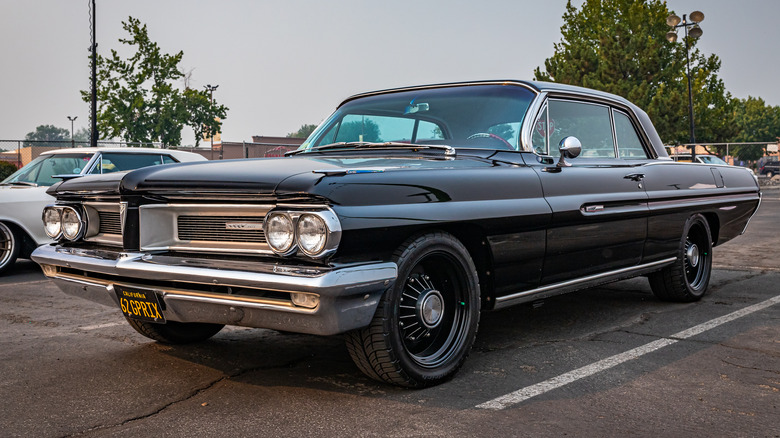
Different_brian/Getty Images
Before the Pontiac GTO was the Pontiac Grand Prix. The automaker started making the car in 1962 and it was based on the Pontiac Bonneville. Like the Bonneville, Pontiac made the Grand Prix for decades, with seven total generations before the nameplate was retired in the 2000s. The first two generations of the Grand Prix remain among the most desired among collectors to this day and those were the ones that Pontiac built in the 1960s. Fortunately, they’re not terribly expensive for collectors and are criminally underrated in Pontiac’s 1960s lineup.
Advertisement
Like many Pontiac cars back in those days, the base engine on the Grand Prix was the Pontiac 389 V8, with a handful of Grand Prix vehicles coming with a 421 cubic inch V8. Obviously, the latter will be more expensive if you can find one, but the 389 is no slouch. The second generation, which began in 1969, introduced the 400 cubic inch V8. The 1969 variant also had a prototype engine that ran on steam power but the engine wasn’t made available to the masses.
What’s nice about the Grand Prix is that you can find it for reasonable prices. Some models from the 1960s can go for well under $40,000 and even dip into the $20,000 to $30,000 range for some second-generation models.
1950s Pontiac Star Chief
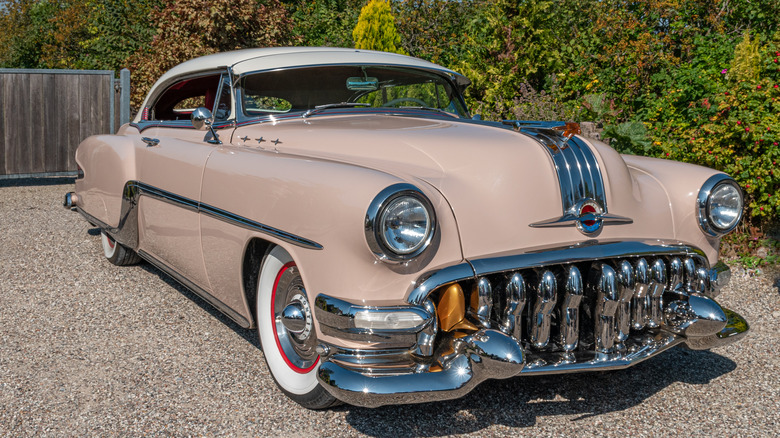
Brainstorm Photos/Shutterstock
The Pontiac Star Chief was Pontiac’s flagship luxury nameplate from 1954 through 1966. Interestingly, the Star Chief was redesigned on average every two years while the car was available, giving it a total of six generations in 12 years. That gives potential shoppers a lot of variants to choose from, although some generations didn’t stray too far from the previous one. Later in life, Pontiac introduced the two-door Ventura, and subsequently limited the Star Chief to only four doors and hardtops.
Advertisement
Under the hood, the Star Chief was well equipped for its day. Most models came with a V8 engine, and it was typically the most powerful one Pontiac made at the time. Earlier models also had tons of configurations, from two-door coupes and four-door sedans to station wagons and convertibles. In short, you can find almost any style of car you’re looking for with a Star Chief badge. Later, many of its variations were spun off into the Ventura or the Bonneville, so later models are almost all sedans. Even so, the 1957 Star Chief is still one of the rarest cars you can find.
In terms of pricing, Star Chiefs run the gamut. You can find them for less than $30,000 pretty consistently while being in good working order.
Advertisement
1960s and ’70s Pontiac Ventura
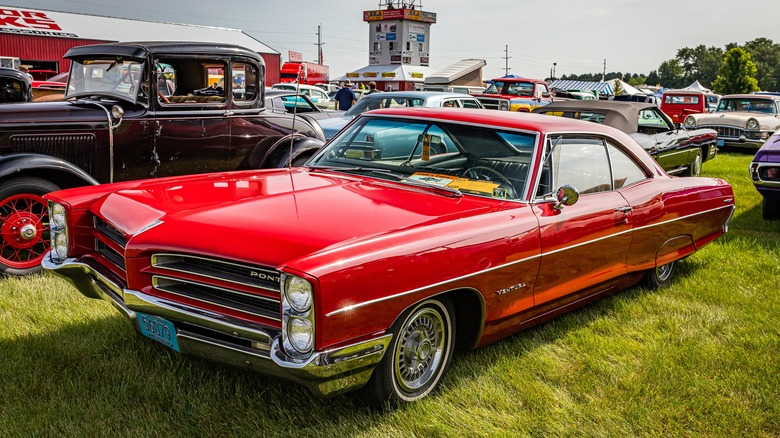
Gestalt Imagery/Shutterstock
The Pontiac Ventura was born to fill in gaps from the Star Chief and Bonneville. It also initially shared a platform with the Chevy Catalina. Pontiac named the car after Ventura, California, which was near a GM assembly plant that built X-body car models (including later-model Venturas). Notably, the Ventura had two distinct eras. The first was 1960 through 1970 when it was a full size car that came in a coupe or sedan configurations. From 1971 to 1977, it was redesigned as a Chevy Nova clone and was known as the Ventura II for a short period of time.
Advertisement
Like most Pontiacs from the 1960s, the Ventura came with the trusty Pontiac 389 V8. Later, the Ventura would get the 428 cubic inch V8 that many cars from Pontiac had by the end of the 1960s. Once the car was redesigned to be like the Chevy Nova, the car was bumped down to a Chevy-built V6 engine as a base with a 307 CID Chevy small-block V8 as the optional engine. Thus, whether you get a speedy car or a cruiser depends on the year and engine you choose.
These days, you can get the Ventura surprisingly cheap. Most of the models we found were under $40,000 with some going for well under $30,000.
1950s, ’60s, and ’70s Pontiac LeMans
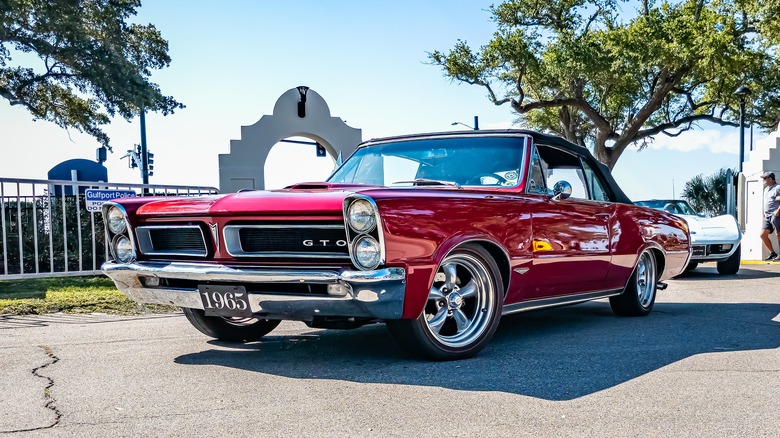
Gestalt Imagery/Shutterstock
The Pontiac LeMans isn’t the most popular or iconic nameplate from Pontiac, but Pontiac made a bucketload of these. The LeMans first came out in 1962 and the line lasted until 1981. It was designed to be Pontiac’s subcompact and midsize car, making it much smaller than most of the cars on the list. Eventually, Pontiac downsized the Bonneville, which replaced the LeMans at Pontiac dealerships in 1982. Its biggest claim to fame, though, was its GTO trim level, which Pontiac eventually spun off into the Pontiac GTO in 1964. Pontiac did that a lot back in those days.
Advertisement
Perhaps the most egregious use of naming conventions was the 1964 Pontiac Tempest LeMans GTO. All three of those names became their own car models but this one was pretty cool. It had the Pontiac 389 V8 and could do 0 to 60 mph. In any case, once the LeMans shed all of its various trim names, it came with a sizable and respectable set of engines that ranged from V6s to V8s, so there are plenty of options depending on if you want a cruiser or a racer.
In terms of pricing, the LeMans is among the more reasonable of Pontiac’s classic cars. Prices for most range below $40,000 with some falling under $30,000 while still being in good condition.
1980s Pontiac Fiero
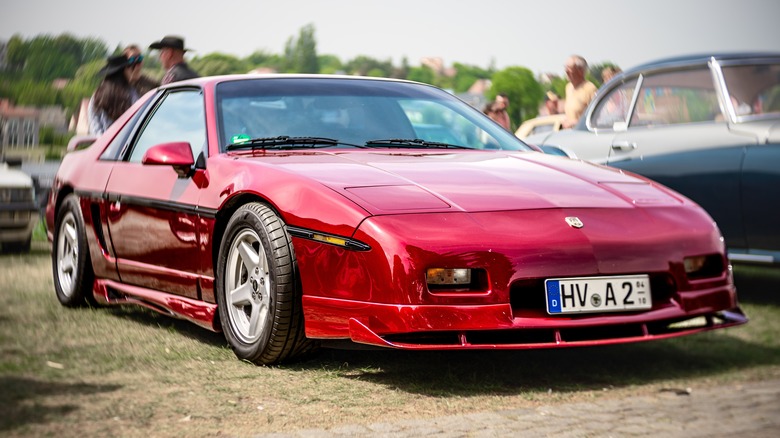
Sergey Kohl/Shutterstock
The Pontiac Fiero isn’t what you’d typically expect from a Pontiac classic car. It’s often described as one of Pontiac’s biggest failures, but it has quietly found a home as a collector’s car. It began life in the 1984 model year and was canceled in 1988, only a four year production run. The car was initially pitched as a two-seater commuter that would be light on gas and less expensive. However, its aggressive design made it look like a sports car. In its final few model years, Pontiac gave enthusiasts the Fiero GT, with a totally reworked suspension and the most powerful engine that ever came in a Fiero.
Advertisement
That engine was a 2.8-liter V6 that made 140 hp. Alongside that, the car came with a 2.5-liter inline-four option that made 92 hp. For enthusiasts, the Fiero GT model is probably the one you’ll want as it’s the most powerful variant of the Fiero. Despite its smaller, less powerful engine, the car itself weighed a paltry 2,789 pounds at its maximum, which let that V6 propel the Fiero from 0 to 60 mph in 8.1 seconds. What made the Fiero really special was its plastic body panels, mid-engine design, and unique styling.
All of the above makes the Fiero surprisingly cheap. You can easily find models in good condition for under $20,000 and some for less than $10,000.
1960s and ’70s Pontiac Firebird
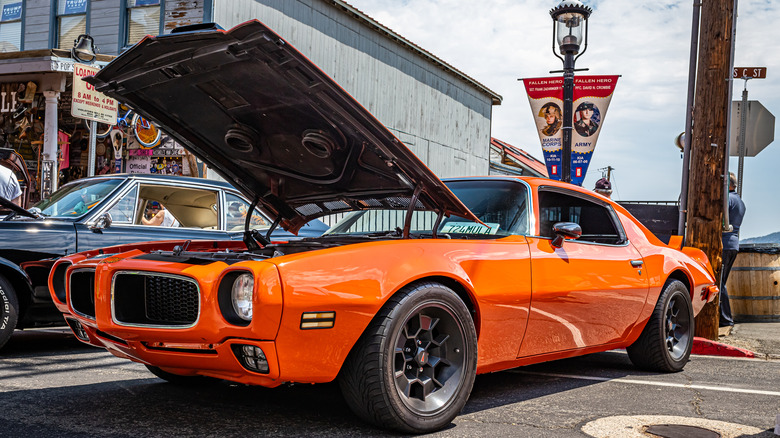
Different_brian/Getty Images
The Pontiac Firebird came out at the tail end of the 1960s to compete with the Chevy Camaro. Pontiac would make the car in varying styles until 2002 when it was discontinued. In the 1960s and ’70s, the Firebird was a pretty hot car. It had all the styling cues that people loved about American muscle cars and guts under the hood to match. Since it was essentially a rebadged Chevy Camaro, it had all the same benefits as its GM stablemate.
Advertisement
Unlike most Pontiac muscle cars, the Firebird came with a larger array of engine options. 1960s models had either a 3.8-liter inline-six that made upward of 220 hp and 240 lb-ft of torque or a 400 cubic inch V8 (which went into many Pontiacs back then) that made 340 hp and 430 lb-ft of torque. In the 1970s, Pontiac increase that to four total engine options, which included an inline-six and three different V8s. So, depending on which one you get, you’ll get a fine cruiser or a rocket sled. The choice is yours.
Prices for Firebirds range from downright cheap to quite expensive. We were able to find plenty of models below $50,000 with many going for under $30,000 and even a few drivable ones for under $10,000, although those will likely need some restoration.
Advertisement
1970s Pontiac Trans Am
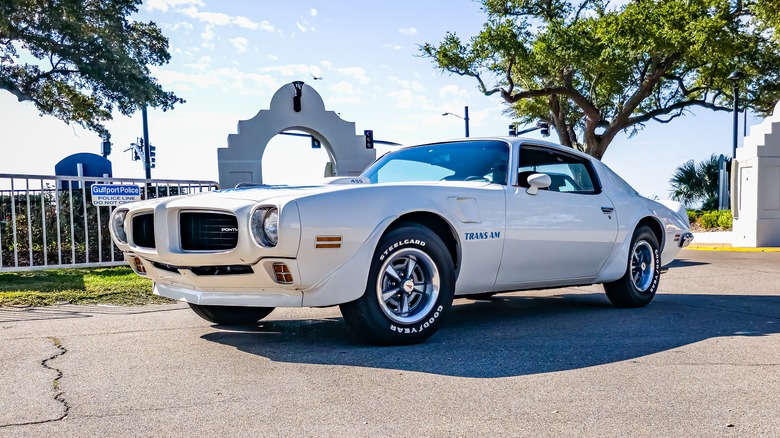
Gestalt Imagery/Shutterstock
Technically speaking, the Trans Am is a trim level for the Pontiac Firebird, so in a way we’re actually recommending the Firebird a second time here. However, the Trans Am was the performance model of the Firebird and, thus, was kind of its own thing. Given how the LeMans, GTO, Bonneville, and other nameplates began life, it’s actually a little weird that the Trans Am was never spun off into its own car. In any case, if you want the best Firebird money can buy, you want a Trans Am.
Advertisement
Trans Ams always came with the most powerful engines that Pontiac had at the time. In the 1970s, that was a 400 cubic inch V8 that put out 370 hp. Later, Pontiac would stuff a 455 cubic inch V8 into this thing. It was actually a downgrade in horsepower, but its 415 lb-ft of torque could still rip this car up and down the street. Many Trans Ams from this era also came with the now-iconic Firebird decal on the hood, which was a $55 option. Trans Ams would get progressively less powerful into the 1980s thanks to emissions standard laws, making the 1970s Trans Ams some of the best you can buy.
Trans Ams, like the rest of Pontiac’s classic cars, run the gamut in terms of pricing. However, it is not unusual to spot a Trans Am in good condition for under $40,000 with some mechanic specials going for as low as $10,000 or even less.
Advertisement